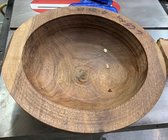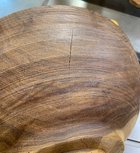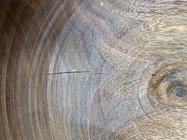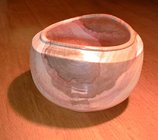I just pulled a large walnut bowl from a bag drying for multiple months. The bowl is 15” diameter. Haven’t had much luck at all drying walnut using a bag and of course this one has one crack from the inside to the outside. Normally it would go into the burn pit. However I have the pewa template and pewas. I have never done a pewa repair. Questions are is this a candidate for repair? If so, do you fill the crack on the inside or leave it open. I intend to leave the crack open on both the pewa side and inside.
Thanks

Outside crack

inside crack

Thanks

Outside crack

inside crack

Last edited:


